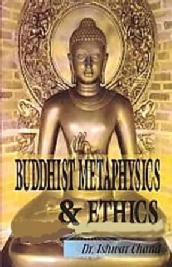



 NEXT
NEXT
 BACK
BACK
 Forum
Forum


Philosophical musings on Quanta & Qualia; Materialism & Spiritualism; Science & Religion; Pragmatism & Idealism, etc.




Post 118. November 01, 2021
Buddhist Metaphysics
Atheistic Spirituality?
Brian Morris is a professor of Anthropology in London. So presumably, he brings a hands-
That broad range of worldviews may have contributed to the spread of the Buddha’s philosophy to the pragmatic ethics of Confucian China, as well as to the more spiritual, theistic, and mystical regions of the Orient. Morris says that “people every-
In any case, the Buddha’s primary concern, like that of Confucius, was this-
End of Post 118
1. Middle Way :
The expression “middle way” refers to the Buddhist understanding of practical life, avoiding the extremes of self-
https://link.springer.com/referenceworkentry/10.1007%2F978-
2. Phenomenalism :
a philosophical theory of perception and the external world. Its essential tenet is that propositions about material objects are reducible to propositions about actual and possible sensations, or sense data, or appearances. ... So long as the material object is unobserved, none of them is actualized.
https://www.britannica.com/topic/phenomenalism
3. Nibbana :
Nirvana. A state of ultimate wisdom and blessedness. 2. A state of release from the cycle of reincarnation and absorption into the universal reality.
https://www.thefreedictionary.com/Nibbana
Buddhist Philosophy
The Buddhist path combines both philosophical reasoning and meditation. The Buddhist traditions present a multitude of Buddhist paths to liberation, and Buddhist thinkers in India and subsequently in East Asia have covered topics as varied as phenomenology, ethics, ontology, epistemology, logic and philosophy of time in their analysis of these paths.
Early Buddhism was based on empirical evidence gained by the sense organs and the Buddha seems to have retained a skeptical distance from certain metaphysical questions, refusing to answer them because they were not conducive to liberation but led instead to further speculation
https://en.wikipedia.org/wiki/Buddhist_philosophy
Buddha & Aristotle
In spite of their different social and cultural contexts there are many formal parallels between the ideal of human perfection conceived by the Buddha and that envisaged by Aristotle. Both regard human nature as a complex of intellectual and emotional factors and consider that the final good for man lies in the full development of his potential in these two dimensions. For both, again, this is a gradual, cumulative process. The state of perfection finally reached — nirvana for Buddhism and eudaemonia for Aristotle — is characterised by happiness and is the final goal of human endeavour.
https://link.springer.com/chapter/10.1007/978-

Buddhist
Metaphysics
Brian Morris
Philosophy Now
Magazine
November 2021
“Buddhism is often described as the philosophy of the ‘middle way’”
Note the incongruous halo
for an atheist
hero

